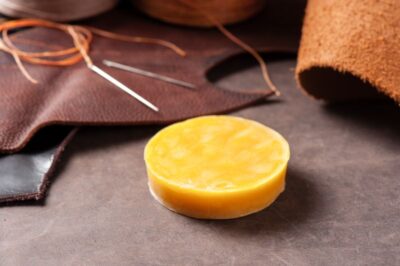One method to rehydrate leather is by applying a sealer or beeswax. This process is easy, but requires patience. Once the leather is dry, your wallet will feel a little stiff, but as it is used it should become softer. This method can be used on all leather types.
Application of a leather sealer
Dry leather is vulnerable to a lack of moisture and can develop cracks and rough patches. If the lack of moisture continues, the leather may become even more damaged. The absence of moisture can cause the packed fibers to rub against each other, which in turn can lead to creases and cracks along the tension points. To remedy this problem, leather sealers are a fantastic way to prevent dryness and cracking.
When applying a leather sealer, make sure that you apply it evenly across the surface of the leather. The thicker oils should be applied in thin layers to prevent them from clogging the pores and causing a greasy or tacky feel. After applying the leather sealer, let it dry overnight.
There are two main types of leather sealers. The first one is made of natural oils, such as lanolin. This substance will condition and waterproof the leather, but it will not add any shine. Hence, this method should be used sparingly, particularly for old leathers and for goods that are exposed to heavy use.
Similarly, it is important to follow the instructions on the label of the leather product. It is best to follow the directions provided by the manufacturer, which can help in restoring softness and pliability.
Application of beeswax
Beeswax is a natural wax that is used to restore the moisture content in dry leather. It can be applied to wood, leather, and bags. Beeswax is also an excellent preservative. However, it should be applied sparingly, as too much beeswax can be harmful to leather. Applying it to dry leather should be done in sections, and the wax should be removed with a clean, dry cloth.
Beeswax is one of the oldest conditioning materials used on leather. It protects leather from fading and cracking. The wax also acts as a protective barrier, shielding the leather from water and sunlight. Beeswax is also a powerful water repellent, making it an excellent choice for leather goods.
Beeswax can be used on a variety of leather products, including shoes, belts, couches, and shoes. It can also be used on nails and screws, preventing wood from splitting. You can even use beeswax to lubricate metal objects, such as window tracks and drawer runners.
Beeswax is an excellent natural oil, and it is the best choice for restoring leather. You can use a beeswax tub or apply it directly to the leather. You can also use a leather conditioner, such as Rapinchuk, which will work on most types of leather. Remember to test the product on a small section before applying it to an entire item. If the product dries on the leather, spot clean it with Castile soap before applying it to other areas.
Application of beeswax to dry leather
Applying beeswax to dry leather can make it look beautiful and feel more durable. The substance is also beneficial to leather’s health. Beeswax forms a barrier on dry leather that protects it from stains. It can also be used as a finishing or waterproofing agent.
Beeswax products can be used to protect a variety of leather materials, including split, suede, rough, and recycled leather. It changes the look of leather by covering exposed fibers and filling in surface gaps. It also makes non-top grain materials look darker. Beeswax is a safe alternative to animal fat and grease, which can damage the surface of the leather.
While beeswax will darken leather, it will eventually lose its color. The key is not to overdo it. Apply the product in thin, light layers and be sure to remove any excess using a dry cloth. You should let the leather dry between layers to avoid clogged pores.
Beeswax is a good waterproofing agent, especially if the leather is exposed to the elements. The product will help repel water and prevent perspiration, while also keeping leather supple and soft. It will also help maintain the texture and grain of the leather. You should avoid applying too much beeswax to dry leather, though, as it will dull the leather’s natural sheen.




